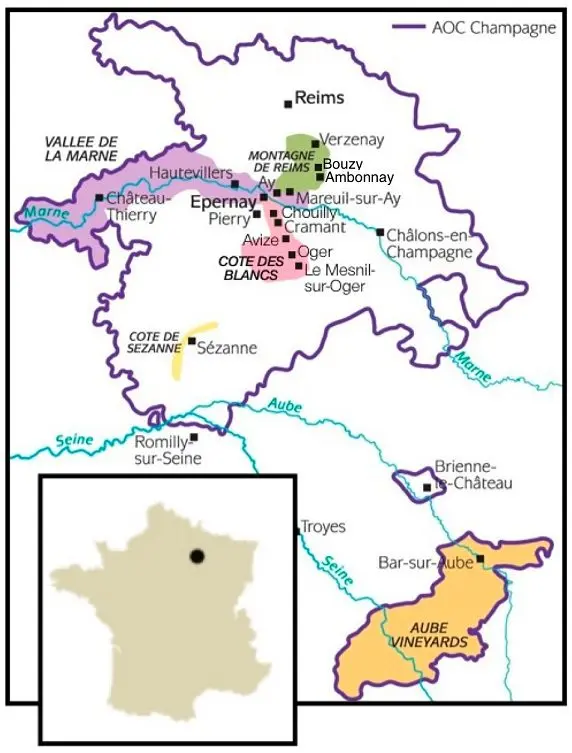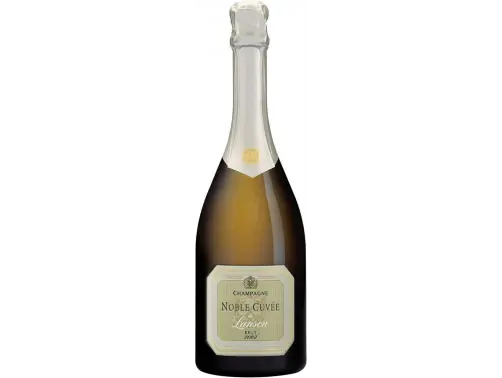Champagne brut is a dry sparkling wine with a minimum sugar content. Despite the fact that today this species is considered the most popular, until relatively recently things were quite different. Until the middle of the XNUMXth century, even wine connoisseurs preferred sweeter drinks, so the technology prescribed the mandatory addition of sugar to champagne after the second fermentation.
Only about 150 years ago, the tradition was broken by the producer Perrier-Jouet, who decided to introduce sparkling wine to the market without additional sugar. However, it took at least 30 years before the new style became popular.
Sparkling wine brut is distinguished by notes of apple, pear and citrus. Sometimes peach and apricot are also felt in the bouquet. After the second fermentation, tones of freshly baked bread and cream appear in the taste.

Today there are 6 types of champagne:
- Extra Brut (depending on the manufacturer, it may also be called ultra brut, brut nature, brut zero). 0-6 g of sugar per liter;
- Brut. 6-15 g of sugar per liter;
- Extra Dry (extra sec). 12-20 g of sugar per liter;
- Sec. 17-35 g of sugar per liter;
- Demi-sec. 33-50 g of sugar per liter;
- Doux. More than 50 g of sugar per liter.
How to drink brut
Dry champagne goes well with a wide variety of dishes, especially caviar, seafood, salty snacks, smoked salmon. It is often served as an aperitif. Like any champagne, brut is cooled to 10-12°C and poured into special flute glasses.

In the post-Soviet space, it is believed that sparkling wines are best suited for solemn situations and holidays, but in Europe and the USA it is quite everyday wine, so no one forbids drinking a bottle at dinner.
Production technology
Only three grape varieties are used for real Champagne: Chardonnay, Pinot Noir and Pinot Meunier. Of course, other sparkling wines do not fall under this rule.
The berries are harvested, pressed, fermented and aged in exactly the same way as in the production of still wine, but in order for the drink to become “sparkling”, it must undergo a second fermentation. To do this, yeast and sugar are added to bottles of already blended still wine. As a result of secondary fermentation, carbon dioxide is released, which makes champagne fizzy. Over time, yeast sediment forms at the bottom, then the bottle is tilted so that the sediment collects in the neck and can be easily removed.
After the sediment is cleared, the manufacturer measures the sugar level in the drink and decides what to do next. If you need to get brut or extra brut, it does nothing, but if sweeter champagne is required, the amount of sugar established by the technology is added to the drink.
Brut sparkling wine producing regions
Real champagne, of course, is produced only in France (and only in specific zones), everything that is made outside of them is called sparkling wine.

Spain. Famous for Cava (pink champagne), brut and more. The average cost of a bottle is 9-15 dollars.
USA. Famous manufacturers: Mumm Napa, Chandon, Roeder Estate, Gloria Ferrer. Bottles start at $20.
France. If French sparkling wine is not made in the Champagne region, then the drink is called Cremant. Alsace is especially famous for its brut. Prices range from $18 to several hundred dollars per bottle.
Of course, the most expensive is real brut champagne. Prices for it start at $30, and for this money you can buy only the simplest wine with minimal aging. The cost is influenced by many factors: terroir, manufacturing company, vintage, brand reputation.
Famous brands
Dom Perignon, Perrier-Jouet, Cristal, Krug, Laurent-Perrier, Bollinger and others. Domestic producers: Abrau-Durso, Zolotaya Balka, CJSC Sparkling Wines.










